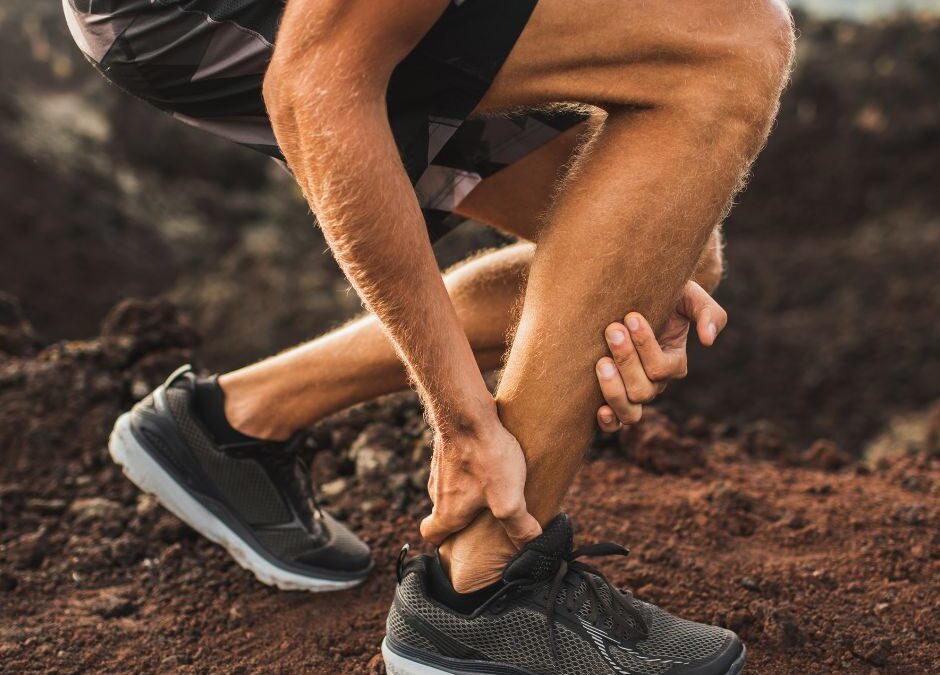Tendon Pain? Why rest is the worst thing you can do
Let’s explore and gain a thorough understanding of tendon pain and how rest is the worst thing you can do. This article will give the reader a greater knowledge base regarding the anatomy of a tendon, how dysfunction can occur and why resting the tendon is a suboptimal approach to treating the issue.
So, I’m curious… what is a tendon and what does it comprise of?
Tendons are strong, cord-like connective tissue structures (like rope) that connect muscle to bone. They transmit the force of a muscular contraction to the skeletal system, while withstanding tension. Tendons are strong and durable, but also flexible because they can stretch and recoil without rupturing. The extensibility of tendons means that they absorb much of the force generated by muscle contractions as well as minimize energy consumption during locomotion (ability to move from one place to another).
A tendon is made of dense regular connective tissue, whose main cellular components are special fibroblasts called tendon cells (tenocytes). Tendon cells synthesize the tendon’s extracellular matrix, which abounds with densely packed collagen fibers. Healthy tendons are white in colour and have a fibroelastic structure. Within the extracellular network, tenoblasts and tenocytes constitute about 90% to 95% of the cellular elements of tendons (1).
Extracellular matrix: The dry mass of normal tendons, which is 30–45% of their total mass, is made of:
60–85% collagen
60–80% collagen I
0–10% collagen III
2% collagen IV
Tendon injury, dysfunction and pain explained:
Tendons are subject to many types of injuries. There are various forms of tendinopathies or tendon injuries due to overuse. These types of injuries generally result in inflammation and degeneration or weakening of the tendons, which may eventually lead to tendon rupture. Tendinopathies can be caused by several factors relating to the tendon extracellular matrix (ECM), and their classification has been difficult because their symptoms and histopathology often are similar. (2)
Tendinopathy (pain and dysfunction in tendon) defined as a failed healing response of the tendon, with haphazard proliferation of tenocytes, intracellular abnormalities in tenocytes, disruption of collagen fibers, and a subsequent increase in non-collagenous matrix. (3)
The dysfunction and pain are associated with overuse in and around the tendon and is characterized with pain, reduced function and exercise intolerance.
The cause of tendinopathy has been linked to the repetitive energy storage and release with excessive compression. The quantity, intensity and frequency of this load are unknown, as it can differ from person to person. Two components contribute to this, extrinsic and intrinsic factors (which can include a person’s’ biomechanics, body composition, age, gender etc). (4)
Types of tendinopathy (5) include:
Tendinosis:
Non-inflammatory injury to the tendon at the cellular level. The degradation is caused by damage to collagen, cells, and the vascular components of the tendon, and is known to lead to rupture. Observations of tendons that have undergone spontaneous rupture have shown the presence of collagen fibrils that are not in the correct parallel orientation or are not uniform in length or diameter, along with rounded tenocytes, other cell abnormalities, and the ingrowth of blood vessels.
Other forms of tendinosis that have not led to rupture have also shown the degeneration, disorientation, and thinning of the collagen fibrils, along with an increase in the amount of glycosaminoglycans between the fibrils.
Tendinitis: Degeneration with inflammation of the tendon as well as vascular disruption.
Paratenonitis: Inflammation of the paratenon, or paratendinous sheet located between the tendon and its sheath.
Tendon injury – Risk Factors:
- Hormone Replacement Therapy
- Contraceptive medication
- Diabetes
- Obesity
- High adiposity in lower limb tendinopathies
- Lack of range of movement Inflexibility
- Strength imbalance
- Poor vascularity
- Altered lower limb biomechanics
Tendon recovery, rest is best, yes? NO, here is why.
Failed healing and tendinopathic features have been associated with chronic overload, but the same histopathological characteristics also have been described when a tendon is unloaded: stress shielding seems to exert a deleterious effect. Unloading a tendon induces cell and matrix changes like those seen in an overloaded state and decreases the mechanical integrity of the tendon. (6) In chronic tendon injuries, mechanical loading has also been shown to stimulate fibroblast proliferation and collagen synthesis along with collagen realignment, all of which promote repair and remodelling. (7)
To further support the theory that movement and activity assist in tendon healing, it has been shown that immobilization of the tendons after injury often has a negative effect on healing. In humans, collagen fascicles that are immobilized have shown decreased tensile strength, and immobilization also results in lower amounts of water, proteoglycans, and collagen crosslinks in the tendons. (8) In conclusion, tendon injuries are complicated and are multifactorial. The content above highlights the current science and understanding with regards to tendon structure, dysfunction and injury recovery. The bottom line is that resting your tendon injury is completely inappropriate and should be avoided. A controlled, tailored and appropriately loaded exercise regime is best in which anyone with a tendon injury should consult a health professional to start their rehabilitation.
References:
Kannus P, Jozsa L, Jarvinnen M. Basic science of tendons. Principles and practice of orthopaedic sports
medicine. Philadelphia: Lippincott Williams and Wilkins; 2000. p 21-37.
Sharma, P. M., N. (2006). “Biology of tendon injury: healing, modeling and remodeling”. Journal of
Musculoskeletal and Neuronal Interactions. 6 (2): 181–190
Maffulli et al. Novel Approaches for the Management of Tendinopathy. J Bone Joint Surg Am. 2010;92:2604-2613.
doi:10.2106/JBJS.I.01744
Maffulli N, Sharma P, Luscombe KL. Achilles tendinopathy: aetiology and management. Journal of The Royal
Society of medicine 2004;97:472–476
Maffulli, Nicola; Wong, Jason; Almekinders, Louis C (2003). “Types and epidemiology of tendinopathy”. Clinics
in Sports Medicine. 22 (4): 675–692. doi:10.1016/s0278-5919(03)00004-8
Cook JL, Purdam CR. Is tendon pathology a continuum? A pathology model to explain the clinical presentation
of load-induced tendinopathy. Br J Sports Med. 2009;43:409-16
Wang, J. H. C. (2006). “Mechanobiology of tendon”. Journal of Biomechanics. 39 (9): 1563–1582. doi:10.1016/j.jbiomech.2005.05.011
Sharma, P. M., N. (2006). “Biology of tendon injury: healing, modelling and remodelling”. Journal of
Musculoskeletal and Neuronal Interactions. 6 (2): 181–190
Do you have any questions?
Call us on (03) 9857 0644 or (07) 3505 1494 (Paddington)
Email us at admin@mdhealth.com.au
Check out our other blog posts here
Our clinical staff would be happy to have chat if you have any questions.
Take the first step to a healthier you!
Would you prefer for someone to contact you regarding booking your Initial Physiotherapy appointment, Initial Exercise Physiology, Initial Osteopathy session or FREE Full Body Assessment*?
Or do you have any other enquiry about our services at MD Health?
Please fill in this form and someone from MD Health will be in touch with you soon.
Alternatively please call us on 03 9857 0644 (Kew East), 03 9842 6696 (Templestowe), 03 8683 9442 (Carlton North) or 07 3505 1494 (Paddington) to book now!
*Please note only the Full Body Assessment is a FREE service. The Full Body Assessment is for new clients at MD Health or returning clients who haven’t been in for 6 months or longer who intend to particpiate in our 13 Week Clinical Pilates Program**.
For all new clients who wish to come in for a one-off, casual or adhoc basis for Physiotherapy or Exercise Physiology the Initial Physiotherapy or Initial Exercise Physiology appointment is a paid service.
** The 13 Week Clinical Pilates Program at MD Health is not a lock in contract and you are not required to attend for the full 13 weeks if you do not wish.
Get In Touch
This site is protected by reCAPTCHA and the Google Privacy Policy and Terms of Service apply.



